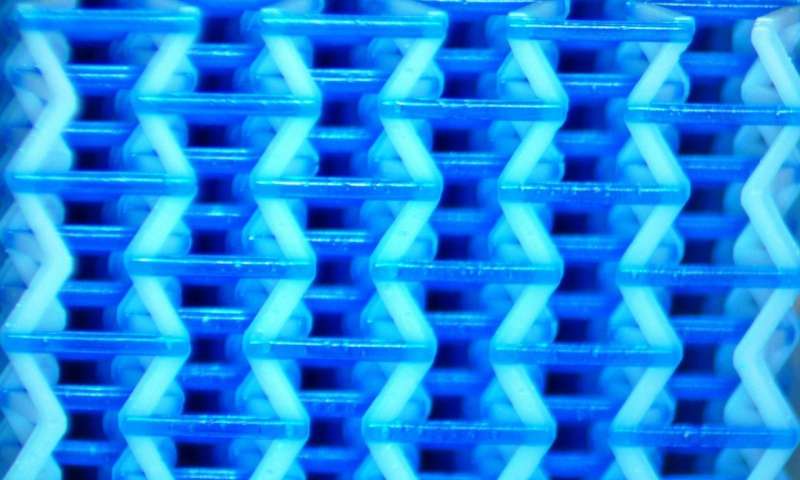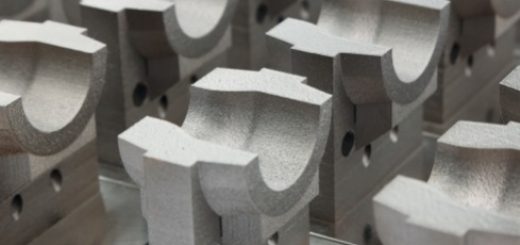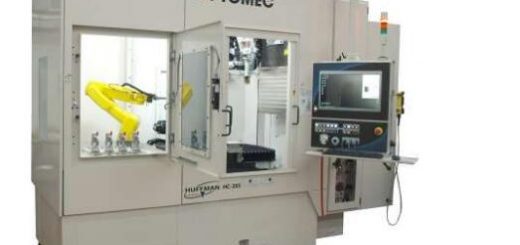Researcher Creates 3-D printed Multimaterial with Programmed Stiffness
A new method of microscale 3-D printing features in-situ resin mixing, delivery and exchange, and a robotic material cleansing system to allow switching between materials of different modulus, or flexibility, without cross contamination between properties.

A micro-lattice structure made from different materials. Multi-material programmable additive manufacturing allows for printing materials of different modulus without cross-contamination. Credit: Virginia Tech
The method, called multimaterial programmable additive manufacturing with integrated resin delivery, is featured in the journal Scientific Reports. The technology could be useful in various applications, including aircraft wing structures, protective coatings, energy absorption, actuation, flexible armor, artificial muscles, and microrobotics.
Xiaoyu “Rayne” Zheng, an assistant professor of mechanical engineering in the College of Engineering and a member of the Macromolecules Innovation Institute, said the microscale manufacturing system can be up-scaled to the centimeter levels and above.
“We use this new technique to create materials with programmed stiffness,” said Zheng. “Basically, you can program where the modulus is distributed in 3-D. With this programming we can achieve morphing capability—to stretch and deform in different directions.”
With normal material, stretching in one direction will cause the material to shrink in the opposite direction. The new patented process and design allows designers to create very specific modulus distributions within a build to allow for programmed morphing—where programmed expansion or shrinkage can occur throughout the material body.
“The technique is a robotic-based additive manufacturing, an integrated fluidic system that allows us to deliver different ink [resin] as feedstock,” Zheng said. “The process is also self-cleaning so that there is no cross-contamination between inks.”
Ideally, Zheng said, 3-D printing technology would like to be at a place where a functional device could be printed incorporating multiple materials without excessive construction, such as tooling, gluing, fitting, or welding.
“Achieving this goal requires us to put an array of different material properties into a single platform and connect them. The added degree of material design freedom allows us to achieve negative, positive-to-zero morphing strains without changing the 3-D micro-architecture of a material,” Zheng explained.
Existing 3-D printing techniques have limited capabilities in incorporating multiple materials, with the challenge of creating truly three-dimensional, complex architectures with microscale resolutions. Unlike traditional 3-D printed materials of a similar base material, multimaterial metamaterials can have varying rigidity distributed throughout—from a soft elastomeric to a rigid brittle within the 3-D lattice framework.
“We envision these programmable morphing material concepts will find applications in directional strain amplifications, actuations, flexible electronics, and the design of lightweight metamaterials with tailored stiffness and toughness,” Zheng said. “The new material design space offered by rapid fabrication of dissimilar material constituents distributed within a micro-lattice architecture opens up new dimensions of 3-D printing of multimaterials with a large degree of stiffness variance.”
Resource: Phys.org




Recent Comments